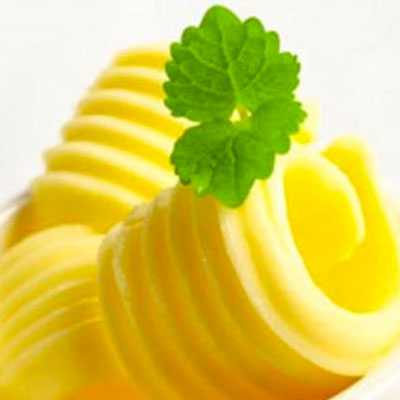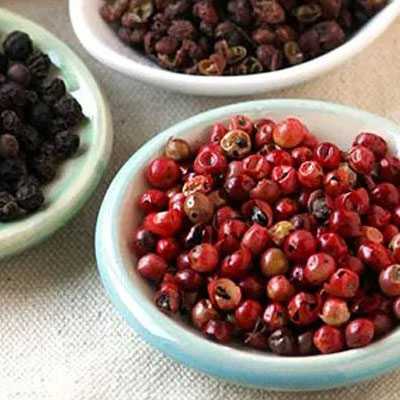Exploring the Varieties of Crostata
While the traditional Italian crostata often showcases classic jams like apricot or cherry, the dessert's adaptable nature has led to a plethora of delightful variations. One such beloved version is the apple crostata. A nod to Italy's northern regions, where apple orchards flourish, this variation uses thinly sliced apples, often spiced with cinnamon and nutmeg, to create a harmonious blend of texture and flavor. The tender bite of the apple, paired with the crunch of the crust, makes it a fall favorite, especially during apple-picking season.
Moving further south, the sun-soaked orchards yield juicy peaches, giving birth to the delectable peach crostata. This version celebrates the succulent, fragrant flesh of the peach, with some recipes incorporating a hint of almond or vanilla to enhance the fruit's natural sweetness. The peach crostata is particularly popular in summer months when the fruit is at its ripest, offering a sun-kissed flavor that captures the essence of Italian summers.
Another popular iteration that has won hearts worldwide is the berry crostata. This variant is a testament to Italy's love for fresh, vibrant berries. Whether it's raspberries, blueberries, or a medley of summer berries, this crostata bursts with color and tangy-sweet flavors. The brightness of the berries contrasts beautifully with the golden hue of the crust, making it as visually appealing as it is delicious. It's no wonder that across the seasons and regions, from the chilly north to the balmy south, the crostata remains a versatile canvas for Italy's diverse array of fresh produce.
What Is The Difference Between A Tart And A Crostata?
The terms "tart" and "crostata" are often used interchangeably in the world of baking, but there are subtle distinctions between the two that differentiate them in their origins, construction, and presentation. Here's a breakdown of the differences:
Origin & Terminology:
- Tart: The tart is rooted in French culinary tradition. The word itself is derived from the Old French word "tarte," which means a pie or tart.
- Crostata: Crostata is an Italian term and is traditionally associated with Italian baking. It is a rustic, free-form pastry that's often made with homemade jams or fresh fruit.
Construction & Shape:
- Tart: Tarts are typically baked in a tart pan that has a removable bottom. This allows for neat, clean edges when it's taken out. The sides of a tart are straight up and down, which gives it a more formal and structured appearance.
- Crostata: Crostatas are more free-formed and rustic. The dough is rolled out, the filling is placed in the center, and the edges are folded over the filling, leaving the center exposed. It doesn't require a special pan; it's typically baked on a flat baking sheet.
Crust:
- Tart: The crust of a tart, known as "pâte sucrée" (sweet pastry) or "pâte brisée" (shortcrust pastry), is typically firm and crumbly. It can be sweet or savory, depending on the filling.
- Crostata: The crust of a crostata is usually more biscuit-like and can be somewhat softer than that of a tart. It's similar to shortcrust pastry but might have a slightly different texture due to variations in ingredients or ratios.
Versatility:
- Tart: Tarts can be sweet or savory. You might find fruit tarts, custard tarts, or even savory versions with ingredients like cheese, vegetables, or meat.
- Crostata: Traditionally, crostatas are sweet, often filled with jams, ricotta, or fresh fruit. However, like tarts, savory versions have become popular in recent years.
Serving Occasion:
- Tart: Given its neat and refined appearance, tarts are often seen at formal gatherings, patisseries, or elegant events.
- Crostata: Due to its rustic charm, the crostata is perfect for casual gatherings, family meals, or countryside picnics.
In summary, while both tarts and crostatas share similarities as delicious pastries with crusts that hold a variety of fillings, their differences lie in their origins, appearance, and traditional uses. Both have their unique place in the world of baking and are cherished by many for their distinct flavors and textures.
What Is Crostata In French?
In French, the term "crostata" doesn't have a direct equivalent. However, the closest French dessert to an Italian crostata in terms of construction and style would be a "tarte." While there are nuances that differentiate a tarte from a crostata, as previously discussed, the two are similar in that they both consist of a pastry crust filled with fruit, jam, or other fillings. If you were in France and described a "crostata," most would likely think of a "tarte" or perhaps a "galette" (a more rustic, free-form tart).
What's The Difference Between A Crostata And A Galette?
A crostata and a galette both refer to rustic, free-form pastries that encompass a variety of fillings, typically fruit-based, but there are nuanced distinctions between the two:
Origin:
- Crostata: This is an Italian term. The crostata is an Italian baked tart or pie, traditionally made with a jam or fruit filling.
- Galette: This term is of French origin. In the context of a rustic tart, a galette is similar in concept to the crostata, though the term "galette" can also refer to various other dishes in French cuisine, including a type of buckwheat pancake.
Dough:
- Crostata: The dough, or pasta frolla, is typically made with flour, sugar, butter, and eggs. It's slightly sweet and can have a cookie-like consistency.
- Galette: The dough for a galette can range from a simple pie crust to a more intricate puff pastry. It might not be as sweet as a crostata crust and can sometimes be a bit flakier.
Form and Presentation:
- Crostata: While crostatas can be free-form, they are often made in a tart pan that gives them a defined shape, especially when prepared for more formal occasions.
- Galette: It's typically a free-form pastry, meaning you roll out the dough, add the filling in the center, and fold the edges over the filling, creating a more rustic look.
Filling:
- Crostata: Traditionally, crostatas are filled with jams or cooked fruits. However, modern variations can include a range of fillings, from pastry cream to ricotta.
- Galette: It can be filled with a variety of sliced fruits, frangipane (almond cream), or other fillings. The filling is often more exposed in a galette than in a crostata due to the way the dough is folded.
In summary, while crostatas and galettes share many similarities, their primary differences lie in their origin, the traditional preparation of their dough, and the nuances of their presentation. However, given the evolution and fusion of culinary practices, the lines between these two delightful pastries can sometimes blur in modern kitchens.
What Is A Galette Vs Tart?
Both galettes and tarts are popular pastries that can be sweet or savory, but there are distinct differences between the two in terms of structure, preparation, and presentation. Here's a breakdown:
Structure & Form:
- Galette: A galette is typically a free-form pastry. This means you roll out the dough, place the filling in the center, and then fold the edges of the dough over the filling, creating a rustic, open-faced appearance. Galettes can be round, rectangular, or even triangular, depending on how the edges are folded.
- Tart: A tart is usually prepared in a tart pan, often with a removable bottom. The crust is pressed into the pan, giving it a structured and uniform shape. Tarts can be completely covered with a crust, lattice-patterned, or left open-faced.
Dough:
- Galette: The dough for a galette can be a simple pie crust, but it's often slightly more robust to handle the free-form structure without the support of a pan.
- Tart: Tart dough, or pâte brisée, is usually buttery and flaky. There's also pâte sucrée, a sweet crust used for dessert tarts, which is rich and cookie-like.
Filling:
- Galette: Given its rustic nature, the galette can be filled with a variety of sliced fruits, vegetables, cheeses, or meats. The filling is often more exposed in a galette due to the way the dough is folded.
- Tart: Tarts can have a wide range of fillings from creams (like pastry cream or frangipane) to fruits, vegetables, and meats. The fillings are usually more refined and can be layered or arranged in decorative patterns.
Origin:
- Galette: The term "galette" is of French origin and can refer to various dishes, not just the rustic tart. For instance, in the Brittany region of France, a galette can also refer to a buckwheat crepe.
- Tart: The concept of a tart exists in many culinary traditions, but the word "tart" is also of French origin, related to the word "tarte."
Occasion:
- Galette: Given its rustic appearance, galettes are often seen as casual or everyday pastries, perfect for a simple dessert or a relaxed brunch.
- Tart: Tarts can be casual or upscale. Due to their structured appearance, they're often associated with more formal occasions or upscale bakeries and patisseries.
In essence, while there's overlap in the realm of tarts and galettes, the primary distinctions are in form and presentation. A galette's charm lies in its rustic, free-form appearance, while a tart often presents a more refined and structured look.
What To Serve with Italian Crostata?
Italian Crostata is a delightful dessert that pairs well with a variety of accompaniments. Here are some options to serve with Italian Crostata:
Whipped Cream: A dollop of freshly whipped cream is a classic and simple choice. You can flavor the whipped cream with a touch of vanilla or a hint of citrus zest to complement the flavors of the crostata.
Ice Cream: Italian-style gelato, especially flavors like vanilla, chocolate, or fruit-based gelato, makes a luxurious pairing. It adds a creamy and cold contrast to the warm crostata.
Fresh Berries: A selection of fresh berries, such as strawberries, raspberries, or blueberries, brings a burst of freshness and vibrant color to the plate. You can lightly macerate them with a little sugar and lemon juice to enhance their flavor.
Chocolate Sauce: For chocolate-based crostatas, a drizzle of warm chocolate sauce or a scoop of chocolate ganache can take the dessert to the next level.
Espresso or Coffee: A cup of strong Italian espresso or a well-brewed coffee is a classic way to end an Italian meal, and it pairs wonderfully with the sweetness of the crostata.










































